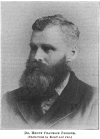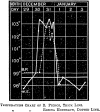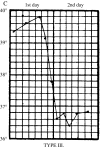'A most protean disease': aligning medical knowledge of modern influenza, 1890-1914
- PMID: 23112382
- PMCID: PMC3483746
- DOI: 10.1017/mdh.2012.29
'A most protean disease': aligning medical knowledge of modern influenza, 1890-1914
Abstract
This article reconstructs the process of defining influenza as an infectious disease in the contexts of British medicine between 1890 and 1914. It shows how professional agreement on its nature and identity involved aligning different forms of knowledge produced in the field (public health), in the clinic (metropolitan hospitals) and in the laboratory (bacteriology). Two factors were crucial to this process: increasing trust in bacteriology and the organisation of large-scale collective investigations into influenza by Britain's central public authority, the Medical Department of the Local Government Board. These investigations integrated epidemiological, clinical and bacteriological evidence into a new definition of influenza as a specific infection, in which a germ - Bacillus influenzae - was determined as playing a necessary but not sufficient role in its aetiology, transmission and pathogenesis. In defining 'modern influenza', bacteriological concepts and techniques were adapted to and selectively incorporated into existing clinical, pathological and epidemiological approaches. Mutual alignment thus was crucial to its construction and, more generally, to shaping developing relationships between laboratory, clinical and public health medicine in turn-of-the-century Britain. While these relationships were marked by tension and conflict, they were also characterised by important patterns of convergence, in which the problems, interests and practices of public health professionals, clinicians and laboratory pathologists were made increasingly commensurable. Rather than retrospectively judge the late nineteenth-century definition of influenza as being based on the wrong microbe, this article argues for the need to examine how it was established through a particular alignment of medical knowledge, which then underpinned medical approaches to the disease up to and beyond the devastating 1918-19 pandemic.
Figures











Similar articles
-
Fighting flu: military pathology, vaccines, and the conflicted identity of the 1918-19 pandemic in Britain.J Hist Med Allied Sci. 2013 Jan;68(1):87-128. doi: 10.1093/jhmas/jrr041. Epub 2011 Sep 11. J Hist Med Allied Sci. 2013. PMID: 21911334 Free PMC article.
-
A definition for influenza pandemics based on historical records.J Infect. 2011 Oct;63(4):252-9. doi: 10.1016/j.jinf.2011.04.013. Epub 2011 May 12. J Infect. 2011. PMID: 21632115
-
A Centenary Tale of Two Pandemics: The 1918 Influenza Pandemic and COVID-19, Part I.Am J Public Health. 2021 Jun;111(6):1086-1094. doi: 10.2105/AJPH.2021.306310. Am J Public Health. 2021. PMID: 33950739 Free PMC article.
-
History of Swine influenza.Curr Top Microbiol Immunol. 2013;370:21-8. doi: 10.1007/82_2011_197. Curr Top Microbiol Immunol. 2013. PMID: 22266640 Review.
-
[Flu outbreaks. Influenza viruses on the way from animal to man].Pharm Unserer Zeit. 2011 Mar;40(2):104-8. doi: 10.1002/pauz.201100403. Pharm Unserer Zeit. 2011. PMID: 21630534 Review. German. No abstract available.
Cited by
-
The enigma of the 1889 Russian flu pandemic: A coronavirus?Presse Med. 2022 Sep;51(3):104111. doi: 10.1016/j.lpm.2022.104111. Epub 2022 Feb 4. Presse Med. 2022. PMID: 35124103 Free PMC article.
-
The 1889-90 flu pandemic in Greece: a social, cultural and economic history with lessons for the 21st century.Infez Med. 2023 Sep 1;31(3):411-420. doi: 10.53854/liim-3103-17. eCollection 2023. Infez Med. 2023. PMID: 37701379 Free PMC article.
-
"The Most Disastrous and Fatal Epidemic": Mortality Statistics During the 1890 Russian Influenza Epidemic in Connecticut.Public Health Rep. 2022 Jan-Feb;137(1):17-24. doi: 10.1177/00333549211000305. Epub 2021 Mar 15. Public Health Rep. 2022. PMID: 33719735 Free PMC article.
-
The Spanish flu and the fiction literature.Rev Esp Quimioter. 2020 Oct;33(5):296-312. doi: 10.37201/req/049.2020. Epub 2020 Jul 7. Rev Esp Quimioter. 2020. PMID: 32633114 Free PMC article. Review.
-
La Grippe or Russian influenza: Mortality statistics during the 1890 Epidemic in Indiana.Influenza Other Respir Viruses. 2019 May;13(3):279-287. doi: 10.1111/irv.12632. Epub 2019 Feb 12. Influenza Other Respir Viruses. 2019. PMID: 30756469 Free PMC article.
References
Publication types
MeSH terms
Grants and funding
LinkOut - more resources
Full Text Sources
Medical
